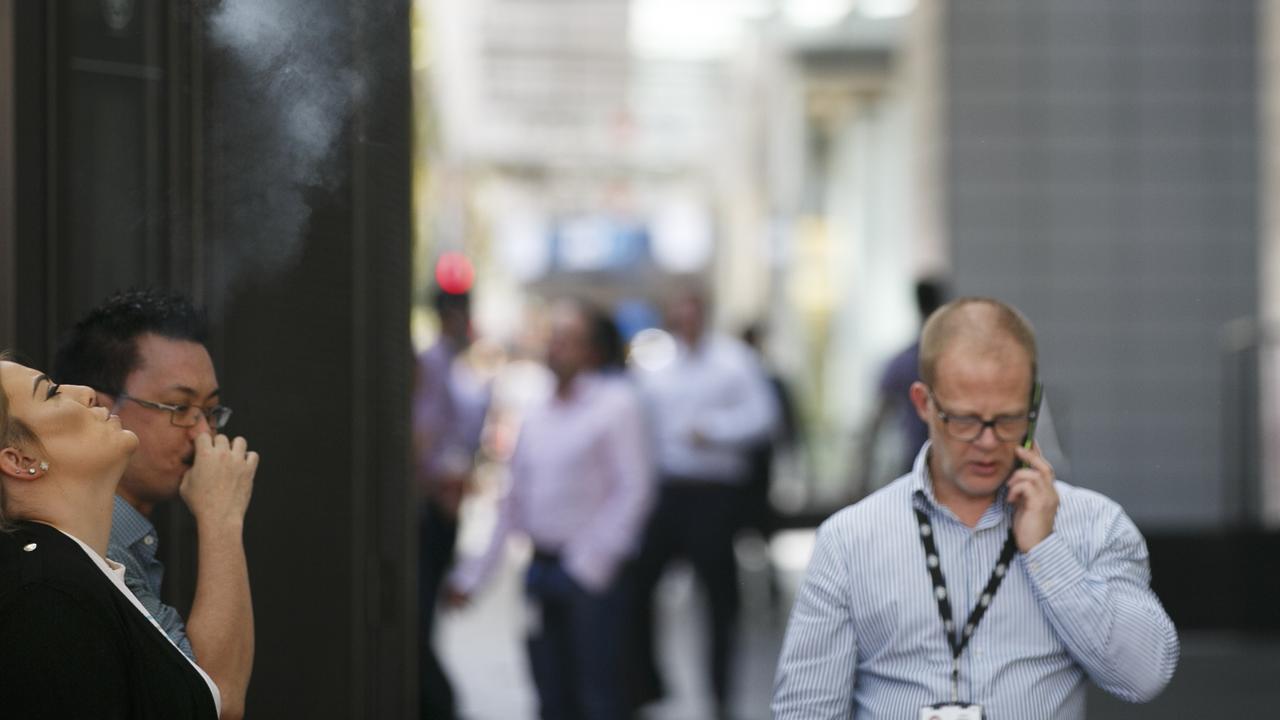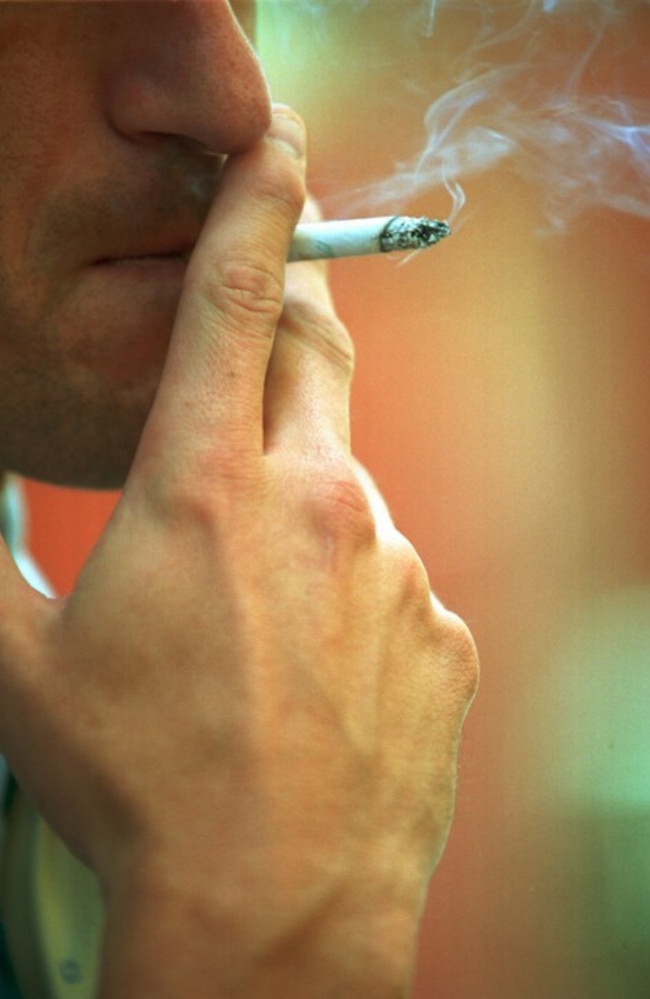Billions up in smoke: The huge amount Australians spend on cigarettes
The huge amount of money Australians are wasting on smoking has been revealed, and there could be other unexpected financial consequences.

Analysis has revealed the huge amount of money going up in smoke each year, with Aussie smokers blowing a collective $14 billion on their habits.
Australian Bureau of Statistics data released last month found 13.8 per cent of people consider themselves to be daily smokers, choking back half a packet of cigarettes each on average.
While smoking rates have declined over the past two decades, more recently those reductions have slowed.
Analysis by consumer comparison website finder.com.au found that $14 billion is spent on cigarettes across the country annually.
Of the 2.8 million regular smokers, finder.com.au found that each spends more than $100 per week on average, for a total average individual cost of $5237 a year.
“These are scarily large numbers,” health insurance expert Angus Kidman said.
“But it’s a conservative estimate too. We calculated the figures based on almost 14 per cent of Aussies smoking half a packet daily on average and then looked at the cost of a packet of 20 of one the cheaper brands of cigarettes, at the lower end of the price scale.”

The ABS found that the Northern Territory had the highest rate of daily smokers with around one in five, or 19.6 per cent, lighting up.
However, the Top End has seen the largest fall in daily smoking prevalence since 1995, down from a staggering 35.6 per cent.
The Australian Capital Territory has the lowest proportion of regular smokers with 10.6 per cent. It’s also home to the highest number of people, almost 60 per cent, who have never lit up.
“Nobody thinks smoking is good for them,” Mr Kidman said.
“We have seen an overall decline in the levels of smoking but we are spending a huge amount of money because the price of cigarettes has accelerated rapidly.
“It’s a handy way for governments to pick up more tax and help fund quit smoking and health programs. There’s not much sympathy in the broader community for the taxation on smokes.”
RELATED: Cigarette packaging to be reviewed after shock study

But there are other financial hits for smokers that might not be immediately obvious, particularly when it comes to life insurance premiums, Mr Kidman said.
Smokers pay at least twice as much for their monthly life insurance premiums — in some cases 270 per cent more.
“While there are obviously different levels of smokers — some are smoking several packets a day, some just smoke socially — but insurers don’t draw that distinction usually. You’re a smoker in their eyes regardless.”
And those Aussies tempted to tick the “non-smoker” box on life insurance applications could be in for a rude shock when their loved ones make a claim.
“You can’t really lie because they will find out. If you die and it’s discovered that you were a smoker but said you weren’t, the policy could be voided and your family won’t get a payout,” Mr Kidman said.

Many people might not realise or have forgotten that they inadvertently lied about lighting up, Mr Kidman said.
“If you’ve taken up smoking again after sorting your policy, the onus is on you to declare the change in your circumstances. I would think maybe people have forgotten or not thought about it.”
Analysis from researchers at the University of Melbourne and La Trobe University last year found half of all global deaths in 2017 were caused by just four risk factors — smoking, high blood glucose, high blood pressure and high body mass index.
An estimated 7.1 million people died around the world from smoking-related illness in that 12-month period.


E-cigarettes have been touted as possible solution to smoking rates and a way to help people kick the habit, but American Heart Association found last year that 1.9 million US adults vaping had never smoked cigarettes.
Worryingly, 60 per cent of regular e-cigarette users were younger than 25.
Similarly, Curtin University found young Aussies more likely to vape for enjoyment rather than a way to quit smoking.
“Multiple types of electronic nicotine delivery systems such as e-cigarettes, e-cigars, e-hookahs and e-pipes are now available in the community,” Curtin University research fellow Dr Michelle Jongenelis said.
“At the population level, concerns have been raised that the widespread introduction of these products may encourage smoking-related behaviours.”
Continue the conversation shannon.molloy@news.com.au | @sleemol




